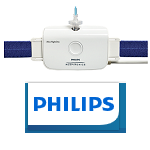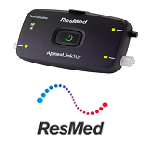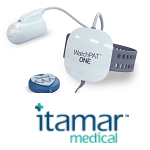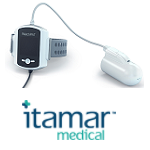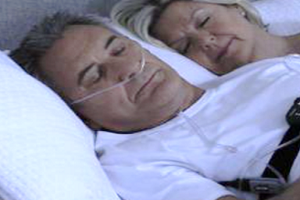
Home Sleep Study Devices
An at-home sleep apnea test is used for the diagnosis of obstructive sleep apnea (OSA). As the name suggests, an at-home sleep apnea test is done right in the comfort of your home. Because you administer the test yourself without the assistance of a sleep technician, this home sleep test is also called an “unattended sleep study.” Most home sleep test devices are portable – about the size of a telephone handset. There are a variety of devices you use to properly complete the test. Equipment can be accessed through a sleep specialist, primary care provider, or independent, for-profit companies.
Select Instructions From the List Below
Alice NightOne Sleep Test by Respironics
Alice NightOne Designed to provide it all – ease, confidence, and reliability. The Read more...
ApneaLink Air Home Sleep Test by ResMed
ApneaLink Air - Home Sleep Test Device ResMed’s ApneaLink Air™ provides performance Read more...
Ares Home Sleep Device by SleepMed
Sleep Med Information SleepMed is the nation's premier provider of best in class Read more...
WatchPAT ONE Home Sleep Device by Itamar Medical
WatchPAT ONE Home Sleep Device WatchPAT ONE offers the same simplicity, accuracy Read more...
WatchPAT®️ 300 Home Sleep Device by Itamar Medical
WatchPAT®️ 300 Home Sleep Device WatchPAT®️ 300 is an innovative diagnostic Home Read more...
What Do At-Home Sleep Apnea Tests Measure?
When you take an at-home sleep apnea test or home sleep test, there are specific biological parameters that are measured to gain insight on whether you have obstructive sleep apnea. Here are the factors measured and the devices that help collect the data.
Nasal and oral airflow: A thin wire is taped by your nose and mouth to monitor your airflow throughout the night. Some sensors look like an oxygen cannula.
Respiratory effort: With elastic belt bands placed across your chest and abdomen, data is collected on your respiratory effort.
Oxygen levels: A small, clip-like device called an “oximeter finger probe” attaches to your fingertip and emits a red light that assists in the evaluation of oxygen levels in your blood while sleeping.
What is the Process For At-Home Sleep Apnea Tests?
Completing your at-home sleep apnea test is a fairly simple process when you are fully aware of what it entails and how it works. While specific rules and instructions vary for each home sleep test provider, there is a general process you typically follow. To make it easy, we’ve broken it down into steps.
Step one: Consult with your doctor to see if the home sleep test option is right for you. If it is, your doctor will order the at-home sleep apnea test for you. Some websites offer the testing kit as an over-the-counter device, but you should always get it approved by your physician. This is especially true if you have any other medical conditions or are taking any medication.
Step two: You’ll either get the equipment delivered to your door or you’ll need to pick it up from your physician. Once you have received your home sleep test, it’s time to apply the equipment to your body before you go to bed for the night. The equipment (mentioned above) includes a belt, small nasal cannula, and finger clip.
Step three: Sleep with the home sleep test equipment for one to three nights to gather enough data for your sleep technician and doctor to assess.
Step four: Return your at-home sleep apnea test devices to the proper diagnostic service provider.
Step five: Your sleep data will be downloaded, processed, and interpreted by a sleep technician and turned into a report. Your doctor will then discuss the report and your results with you.
** ASA Authors & Reviewers: Sleep Physician at American Sleep Association Reviewers and Writers. Board-certified sleep M.D. physicians, scientists, editors and writers for ASA.
Home Sleep Study Devices
Alice NightOne Sleep Test by Respironics
Alice NightOne Designed to provide it all – ease, confidence, and reliability. The Read more...
ApneaLink Air Home Sleep Test by ResMed
ApneaLink Air - Home Sleep Test Device ResMed’s ApneaLink Air™ provides performance Read more...
Ares Home Sleep Device by SleepMed
Sleep Med Information SleepMed is the nation's premier provider of best in class Read more...
WatchPAT ONE Home Sleep Device by Itamar Medical
WatchPAT ONE Home Sleep Device WatchPAT ONE offers the same simplicity, accuracy Read more...
WatchPAT®️ 300 Home Sleep Device by Itamar Medical
WatchPAT®️ 300 Home Sleep Device WatchPAT®️ 300 is an innovative diagnostic Home Read more...


